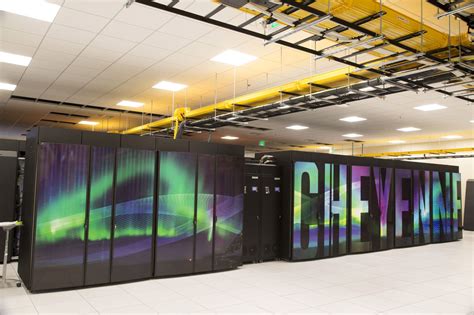The recent auction of the Cheyenne Supercomputer, a technological marvel of its time, has sparked a plethora of discussions regarding the logistics, viability, and potential end-uses for such a powerhouse. This machine, originally tasked with massive computational duties ranging from weather forecasting to scientific research, represented a peak in engineering excellence, marked both by its raw computational ability and its intricate cooling and power setups. The key challenge now is its positioning in a market where technology rapidly becomes obsolete.
Particular interest has been seen in the auction process and pricing strategy for such colossal and specialized equipment. Commenters note the curiosity about the apparent low starting bids that attract potential buyers who later face the reality of high transportation and upgrading costs. Herein lies the crux of purchasing massively integrated systems: the upfront cost often belies the total investment required to make such systems operational again, especially outside their original installation environment.
Given the technical specifications and immense scale of Cheyenne, which includes sophisticated liquid cooling systems and thousands of interconnected high-performance nodes, the logistical aspect of dismantling, moving, and re-deploying such components can be daunting. Moreover, once relocated, the components’ integration without their original framework often renders them less effective or in some cases, non-operable. However, various insights from enthusiasts suggest segmenting the system into smaller, individually sellable units, potentially increasing flexibility for buyers.
Economic feasibility frequently comes under scrutiny when dealing with decommissioned supercomputers. The initial low cost of acquisition is juxtaposed with high operational costs, exacerbated by ageing technology that consumes significantly more power compared to newer, more efficient models. Not to mention, the resale value of its individual parts like CPUs, memory, and blade servers might offer a returns incentive; however, flooding the market with outdated components could potentially depress prices further, raising doubts about profitability.
Interest from niche markets such as academic departments needing affordable computational power or specialized industries where high computing throughput from older technology still serves a crucial role could drive demand. Contrarily, commercial data centers and mainstream businesses may see little value due to the higher energy costs and lower efficiency, focusing on more modern and adaptable technologies.
Innovative reuses of Cheyenne’s hardware also present intriguing scenarios. With creative marketing, such as issuing commemorative plaques or certification of authenticity, components of the Cheyenne could appeal to collectors or tech enthusiasts who value the machine’s historical significance. Moreover, converting parts of the supercomputer for educational purposes or for display in technology museums could preserve its legacy while demystifying supercomputing for the general public.
The conversation around the Cheyenne Supercomputer auction epitomizes the broader challenges facing the repurposing of high-end, obsolete technology. New models of computation, growing environmental consciousness, and shifts in technological utility all play roles in determining the fates of such giants. For many prospective buyers, the dream of rebooting a once-potent computing behemoth must be carefully weighed against practical and economic realities.
Ultimately, the future of the Cheyenne Supercomputer components depends on a myriad of factors, from market demand for specific parts to imaginative new uses that could breathe life into old silicon. As this auction unfolds, it serves not only as a waypoint in the lifecycle of high-performance computing machines but also as a case study in the complexities of technology lifecycle management, echoing a sentiment familiar in tech: ‘the only constant is change.’


Leave a Reply